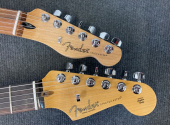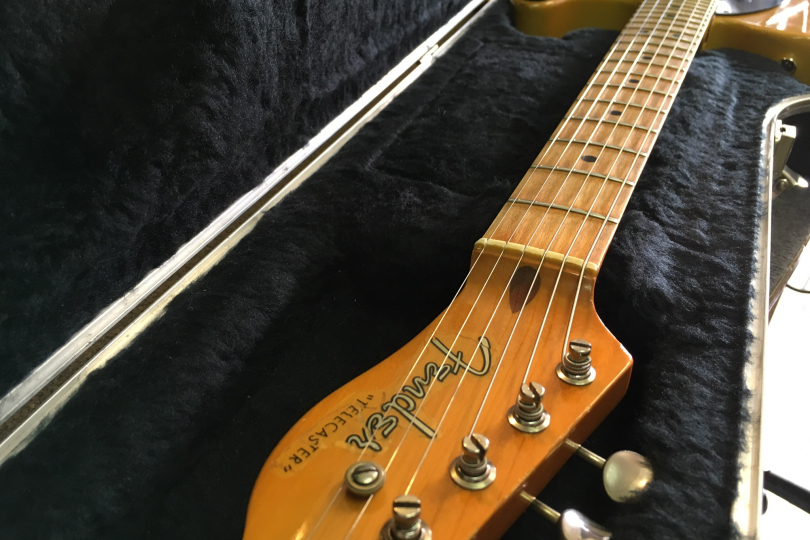
Under the Hood #2: Telecaster Neck Development and Modification
In this second part of our series, we'll discuss the evolution of the Telecaster neck throughout history. Due to the differing preferences of guitarists, the Telecaster neck has undergone countless modifications. It's not just the materials used, but especially the neck profile, the radius of the fingerboard or the actual attachment of the neck to the body of the guitar. Nowadays, everyone can choose their favorite neck, but in the 1950s and 1960s, players didn't have so much choice. Still, many of today's guitarists are returning to their roots.
Let's start again with Leo Fender and his approach to guitar development. It was very pro-customer and logical. We all have different sized hands and different sized fingers. When playing guitar, this detail is so important that it can completely affect the guitarist's perception of the instrument and the feeling of playing. Fender was aware of this. He wanted everyone to be comfortable playing his guitars—to be able to play for hours on end. That's why he invented the easily adjustable guitar, so that everyone could customize it to their own preferences.
The thing that can't be adjusted, however, is the shape of the neck and fingerboard. That's determined by the manufacturer. With the first Telecasters, Leo Fender observed how players played his guitars, how they felt about them, and he asked them for feedback. He found that not everyone was comfortable with the neck design. In order to satisfy the guitarists, the neck specifications ended up changing every year.

Neck profile
After decades of modification, many people orient themselves to Fender necks by the letters that resemble their profiles. The letters U, V, C, and D are the most common. Some are easily recognizable by touch, others are harder to make out. Experts argue, for example, whether necks from the early and late 1950s are more like the letter U or D. But that's not so important—it's all about basic differentiation.
Before going into a more detailed description of the various modifications of the neck shape, it is worth remembering that the markings of the neck profile are sometimes confused with the width of the zero fret. Here, Fender marked the neck with the letters A, B, C, and D, and in the 1960s each neck had a date stamp and a letter to indicate its size. Now, let's move on to the individual neck profile shapes.
The first Telecasters were characterized by a wide, bulky neck. The term"baseball bat" was applied to these models because the neck profile resembled the shape of. . . a baseball bat. It resembled the letter U. Looking at the neck from above, you can see that it does not taper at the head or the foot. This neck was manufactured between 1950 and 1955. It was an ideal choice, especially for players with large hands. It is also suitable for guitarists who have their thumb resting on the top edge of the neck when playing.
In 1957, the shape of the V became even more slanted and indeed, even by feel, strongly resembles the letter V. The term "hard V" was adopted for this profile. Many players find it very comfortable—Eric Clapton in particular liked it on his Stratocaster.
V profiles also varied depending on the model of guitar. For example, the smaller V profile was found on the Musicmaster or Duo Sonic models, which have a shorter scale length. In any case, V necks became very popular and well-liked across the decades.
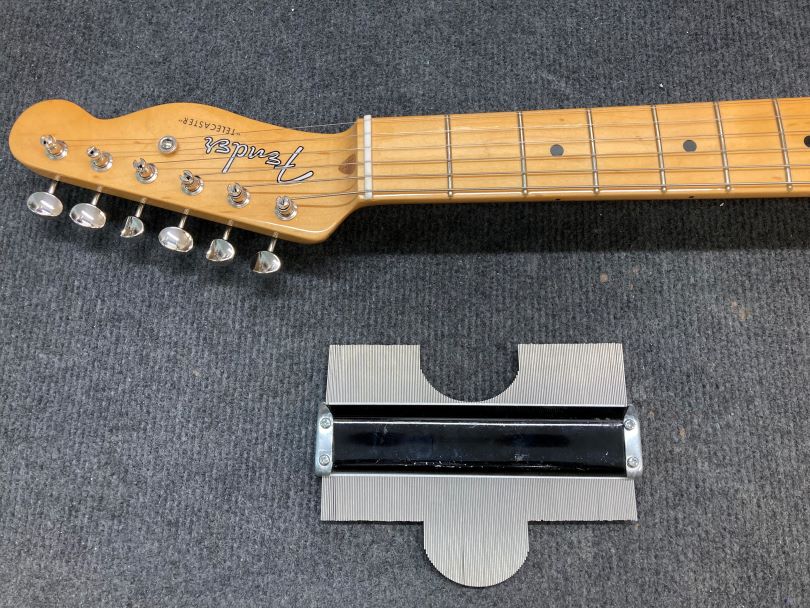
In 1958 and 1959, the neck profiles returned to a more oval shape. The V shape disappeared and became more like an oval, but not as deep as the older U profile. The neck dimensions from these years tend to be used a lot on reissue models. During 1958 and 1959, the oval profile became increasingly thinner. According to some collectors, it is extremely thin by the end of 1959. However, in 1961 a more robust oval profile similar to the 1958 one reappeared. So it is clear that Fender was still trying to evolve, concentrating on many details and not afraid to go back to older designs.
In the following years, the neck profile was not so extensively modified, probably due to the fact that in 1959 Fender started using a rosewood fingerboard. It always depends on the particular year of manufacture. Slight differences can be judged, for example, by collectors who have Telecasters from each year and notice even the subtlest distinctions.
Over time, the neck profiles were further modified, and in later years the C shape became very popular. This can also be found with the designation "modern C" etc. This shape suits a significant number of guitarists and is commonly found on today's Telecasters.
Neck profiles are another detail that puts Fender ahead of the times. Leo understood that to satisfy guitarists, he had to listen to their needs. So he put out models with different profiles to ensure that everyone could find their favorite. The more musicians played his guitars, the more variety emerged. This came with many challenges—which Fender overcame.
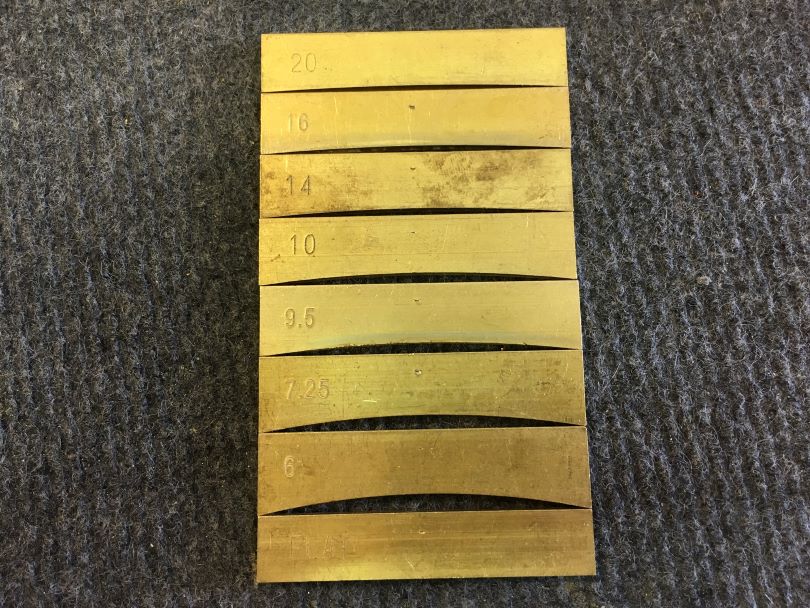
Radius of the fingerboard
The whole neck is important for the guitarist's hand —not only its back profile, but also the radius of the fingerboard. This affects the feel of the guitar when playing solos and chords or when bending the strings. It complements the neck profile.
On the first Telecasters, and other models in the 1950s, '60s, and '70s, the radius was 7.25 inches. However, a Broadcaster with a 9-inch radius is also documented, indicating attempts at different variations in the first year of Telecaster development.
A 7.25-inch radius means that the fingerboard is quite rounded. As it is not to everyone's liking, this radius doesn't appear that often on modern Fenders. The problem arises with bending, for example. If the neck is not optimally set or is crooked, there is a drone in the higher positions and a considerable loss of sustain. The 7.25-inch radius is also not entirely suitable for guitar solos. On the other hand, it is well suited for playing chords and accompaniments. However, this categorization is very general and certainly not objective—some guitarists would certainly disagree.
Fender used the 7.25 radius at a time when most guitarists played chordal accompaniment. Over time, as playing styles evolved and more guitarists moved to soloing, the first shortcomings and needs for a flatter radio began to emerge. Gibson guitars, for example, had one. However, the scale length also played a role here, which was 25.5 inches on the Fender and 24.75 inches on the Gibson.
In the 1980s, Fender came out with a 9.5 inch radius, which is flatter, making it more comfortable for soloing, but also good for playing chords and accompaniments. This radius becomes very popular and can be found on most modern Telecasters.
Over time, Fender came up with a combined radius where the beginning of the fingerboard is different than the end—for example going from 9.5 to 12 inches. So nowadays, multiple combinations are possible.
It is the rounded fingerboard radius and specific neck profiles that allow for the typical feel when playing the old Telecasters. Today's reissue models always try to be based on specific years, so you can choose the combination that suits you best. This gives you a significant advantage over the guitarists from the past.
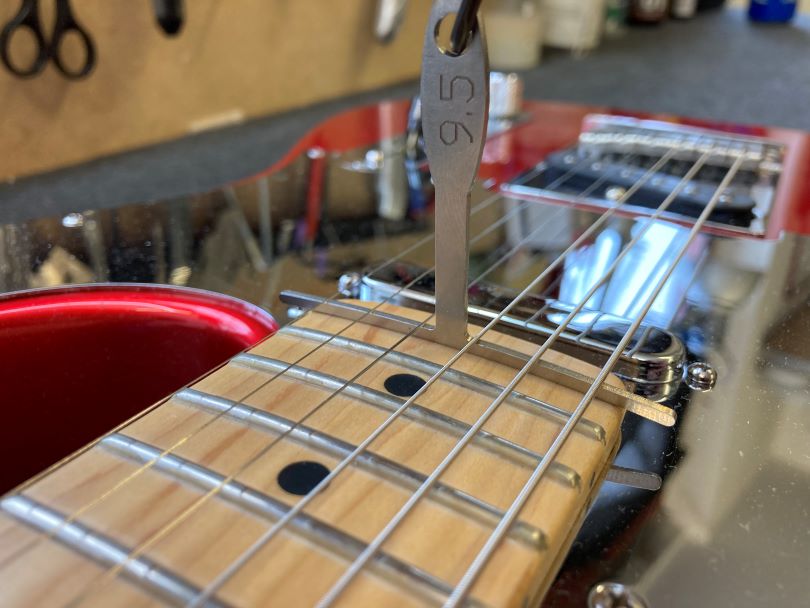
Frets
A factor that further influences the feel and comfort of playing is the size of the frets on the fingerboard. Telecasters from the 1950s and 1960s used very thin and low frets. They usually had a width of less than 2 mm (0.078 inches) and height of 1.09 mm (0.043 inches), which is more common on acoustic guitars today.
Because of this fret size, many older Fenders have been refretted or are in need of refretting. Playing causes dents to the frets and therefore they need to be filed down. Smaller frets have a shorter life span than larger frets. Many times I have handled older Fenders from the 1960s with original frets that had been filed down so often that they were too small. The playability of the guitar was greatly diminished by this.
For modern Telecasters and Fenders, the five most common fret sizes are generally used. Each has its own code designation:
Medium jumbo (6130) - width 2.7 mm, height 0.9 mm
Jumbo (6100) - width 2.8 mm, height 1.4 mm
Modern narrow (6105) - width 2.3 mm, height 1.4 mm
Vintage jumbo (6150) - width 2.6 mm, height 1.06 mm
Vintage fret (6230) - width 2 mm, height 1,09 mm
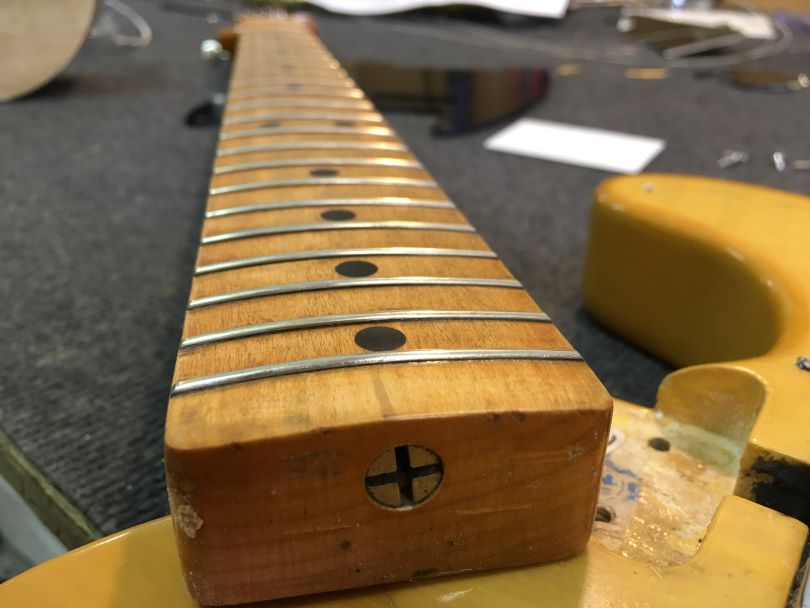
Neck and fingerboard material
In 1950, Fender took the unorthodox gamble to go with maple. Telecasters had all-maple necks, until Fender started putting rosewood on the fingerboard in 1959. The first rosewood appeared in 1958, but only on the Jazzmaster at first. Other models followed a year later.
By 1965, Brazilian rosewood was used, which is highly prized for its beautiful grain. Then, during 1966, Indian rosewood started to be used.
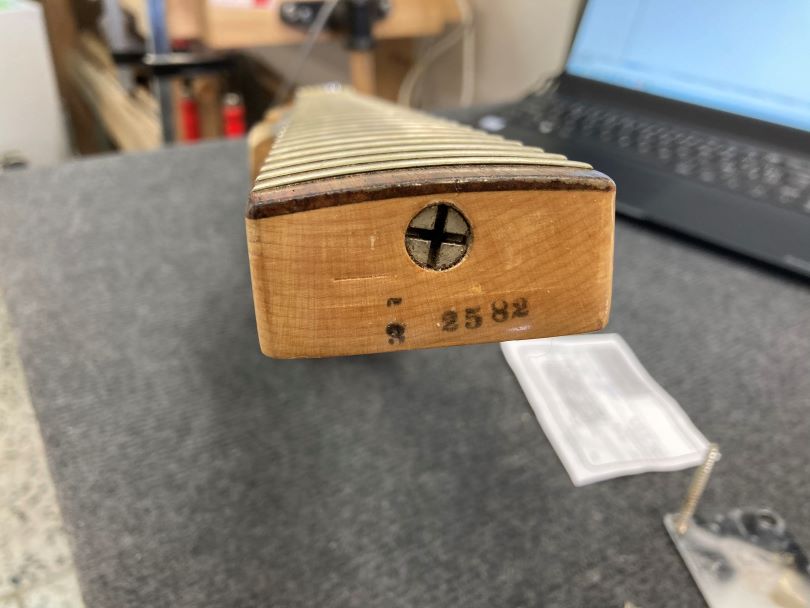
Between 1960 and 1968, rosewood fingerboards were used exclusively; maple was only available on special order. However, it was no longer a one-piece maple neck as in the 1950s. The maple neck was glued to a maple fingerboard. Fender began offering a one-piece maple neck again in 1969.
There are still endless debates about whether the rosewood fingerboard or the maple one plays better. I don't think the two camps will ever agree. The question is whether there really is any discernible difference.
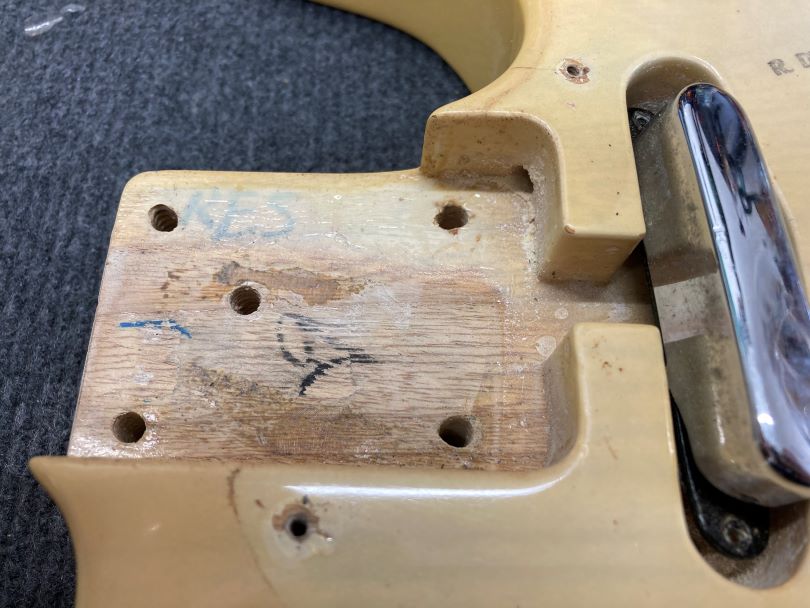
Neck anchoring
Fender made the Telecaster popular mainly because it is easy to repair and modify. This is related to the way the neck is attached to the body of the guitar. Fender's genius lies in the fact that to change the neck, all you need is a screwdriver. In case of damage, you simply unscrew the neck and put on a new one or an old repaired one. You can also replace the neck with any other neck these days—just choose the specifications like wood, profile, and radius. There is a wide range to choose from.
Since the 1950s, the neck attachment was done with four bolts. Between 1971 and 1980, the anchor on most Fender models changed and only three bolts held the neck. The classic Telecaster has always remained mounted on four bolts, but the Telecaster Thinline, Custom, and Deluxe have changed to three bolts. During 1981, all models again had the old quality four-bolt attachment.

Everything on a Telecaster can be modified
The neck of the Telecater has undergone a long evolution and countless variations of its design have been created throughout history. Nowadays, anyone can choose any combination to create their ideal Telecaster. The development of this model can serve as a great inspiration. Leo Fender himself is a shining example of this, as he has constantly modified and developed his guitars.
If you have found an error or typo in the article, please let us know by e-mail info@insounder.org.


